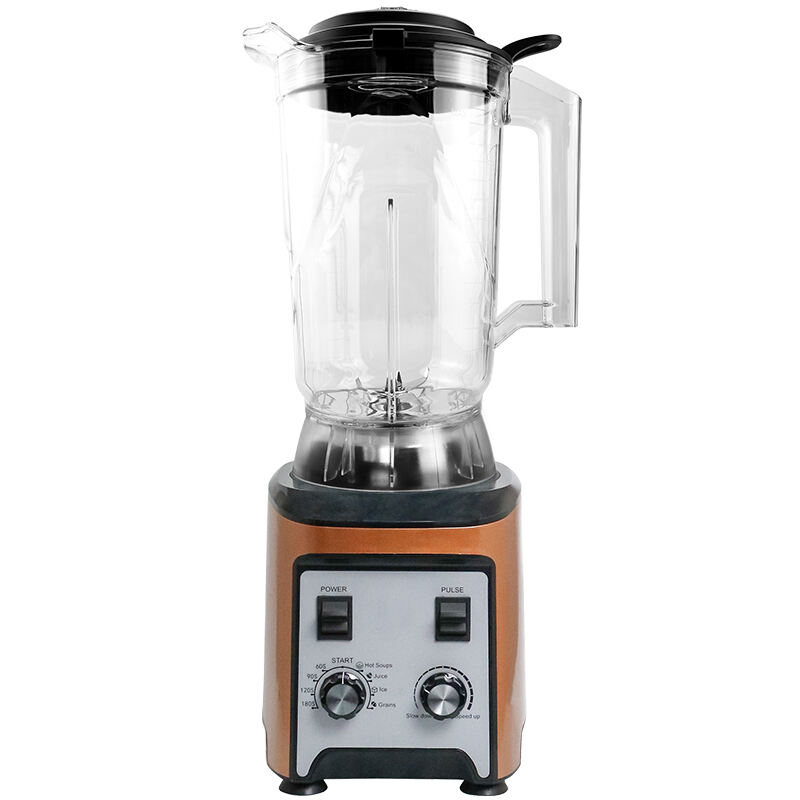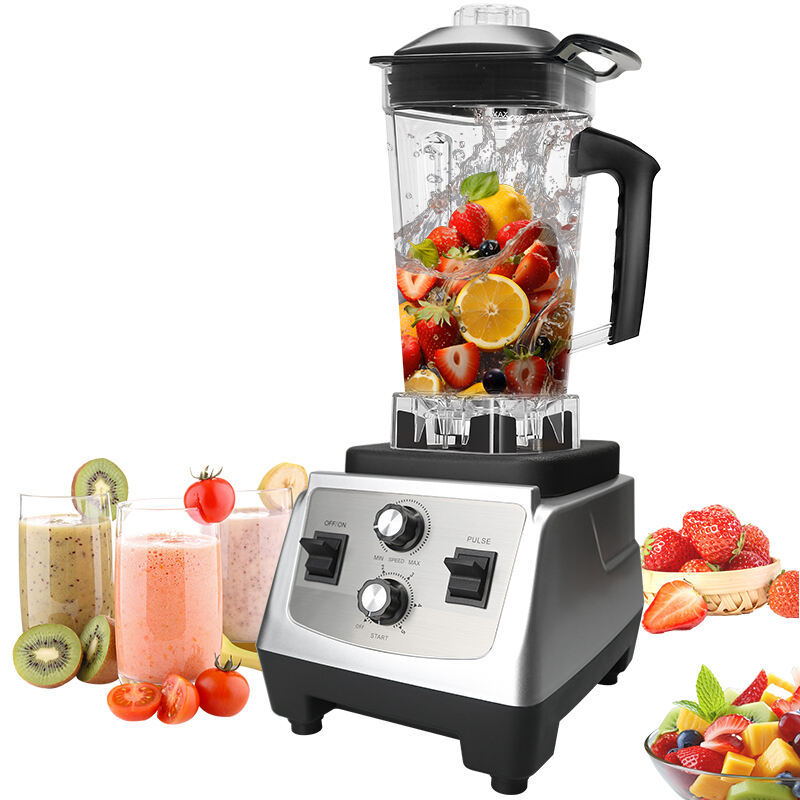Making the Right Investment in Professional Blending Equipment
Selecting a commercial blender represents a crucial decision for any food service operation, whether you're running a busy restaurant, smoothie bar, or catering business. The right commercial blender can revolutionize your kitchen operations, boost productivity, and ensure consistent quality in your blended creations. However, with numerous options available in the market, making an informed choice requires careful consideration of several key factors.
Professional-grade blending equipment serves as the backbone of many food service operations, handling everything from smooth purees and creamy soups to crushed ice and frozen beverages. Understanding your specific needs and matching them with the right commercial blender capabilities will not only enhance your menu offerings but also provide long-term value for your investment.
Essential Features of High-Performance Commercial Blenders
Motor Power and Performance Specifications
The heart of any commercial blender lies in its motor. Professional-grade units typically feature motors ranging from 2 to 3.5 horsepower, with some heavy-duty models reaching up to 4.2 HP. This powerful performance is essential for handling tough ingredients and maintaining consistency during high-volume operations. Look for blenders with peak horsepower ratings that match your intended usage – higher power ratings generally indicate better ability to handle dense ingredients and frozen items.
Beyond raw power, consider the motor's cooling system and duty cycle ratings. Advanced cooling mechanisms help prevent overheating during continuous use, while longer duty cycles allow for extended blending sessions without risking motor burnout. The best commercial blenders incorporate thermal protection features and efficient ventilation systems to ensure reliable performance during peak business hours.
Container Design and Material Quality
The blender container's design significantly impacts both performance and practicality. Premium commercial blenders feature containers made from high-grade materials like BPA-free copolyester or stainless steel. These materials offer exceptional durability while resisting scratches and stains. The container's shape also matters – look for designs that create efficient vortexes for thorough blending and include measuring marks for precise ingredient portions.
Consider the container capacity based on your typical batch sizes. Most commercial blenders offer containers ranging from 48 to 64 ounces, though larger options are available for high-volume operations. The container's stackability and storage footprint should also factor into your decision, especially if counter space is limited.

Understanding Different Blending Technologies
Variable Speed Control Systems
Modern commercial blenders incorporate sophisticated speed control systems that offer precise control over blending operations. Variable speed controls allow operators to adjust blending intensity for different recipes and ingredients. Look for models with wide speed ranges, typically from 1,500 to 24,000 RPM, providing the versatility to handle everything from gentle folding to high-speed emulsification.
Advanced models feature programmable speed settings and preset programs for consistent results across different operators. These automated functions can significantly reduce training time and ensure product consistency, particularly valuable in busy commercial environments where multiple staff members operate the equipment.
Blade Technology and Design Innovation
Blade design plays a crucial role in blending efficiency and final product quality. Premium commercial blenders feature hardened stainless-steel blades arranged in configurations that optimize cutting, crushing, and mixing actions. Some models incorporate specialized blade geometries for specific applications, such as wet blade assemblies for smoothies and dry blade assemblies for grinding grains or spices.
Consider blenders with sealed blade assemblies that prevent leakage and contamination. The best commercial units also feature easily removable blade assemblies for thorough cleaning and maintenance, ensuring food safety and prolonging equipment life.
Durability and Maintenance Considerations
Build Quality and Materials
Commercial blenders must withstand constant use in demanding environments. Look for models constructed with high-grade materials like die-cast metal housings and reinforced drive sockets. The quality of components like bearings, seals, and coupling systems significantly impacts long-term reliability and maintenance requirements.
Evaluate the manufacturer's warranty terms and availability of replacement parts. Leading commercial blender brands typically offer comprehensive warranties covering both parts and labor, reflecting confidence in their product's durability. Consider the total cost of ownership, including potential maintenance and replacement part expenses over the equipment's lifecycle.
Cleaning and Sanitization Features
Easy cleaning capabilities are essential for maintaining food safety standards and operational efficiency. Look for commercial blenders with dishwasher-safe components and smooth surfaces that resist food accumulation. Some advanced models feature self-cleaning cycles that simplify daily maintenance procedures.
Consider designs that minimize seams and crevices where food particles can accumulate. Removable components should be easily accessible and reassembled without tools. These features not only ensure proper sanitization but also reduce the time spent on cleaning between uses.
Frequently Asked Questions
What size commercial blender do I need for my business?
The ideal size depends on your typical batch volume and menu items. For most restaurants and cafes, a 64-ounce container handles standard recipes efficiently. However, high-volume smoothie shops might benefit from larger capacities or multiple units. Consider your peak service periods and average serving sizes when selecting container capacity.
How much should I expect to invest in a quality commercial blender?
Professional-grade commercial blenders typically range from $400 to $1,500, with high-end models reaching $2,000 or more. While this may seem significant, consider it an investment in reliability and performance. Factor in warranty coverage, expected lifespan, and productivity benefits when evaluating different price points.
What maintenance schedule should I follow for my commercial blender?
Daily cleaning and weekly deep cleaning are essential. Inspect seals and bearings monthly, and schedule professional maintenance every 6-12 months depending on usage volume. Following the manufacturer's maintenance guidelines helps prevent unexpected breakdowns and extends equipment life. Keep detailed maintenance records to track performance and plan for eventual replacement.
 Zhongshan city HaiShang Electric Appliances Co,. Ltd
Zhongshan city HaiShang Electric Appliances Co,. Ltd



